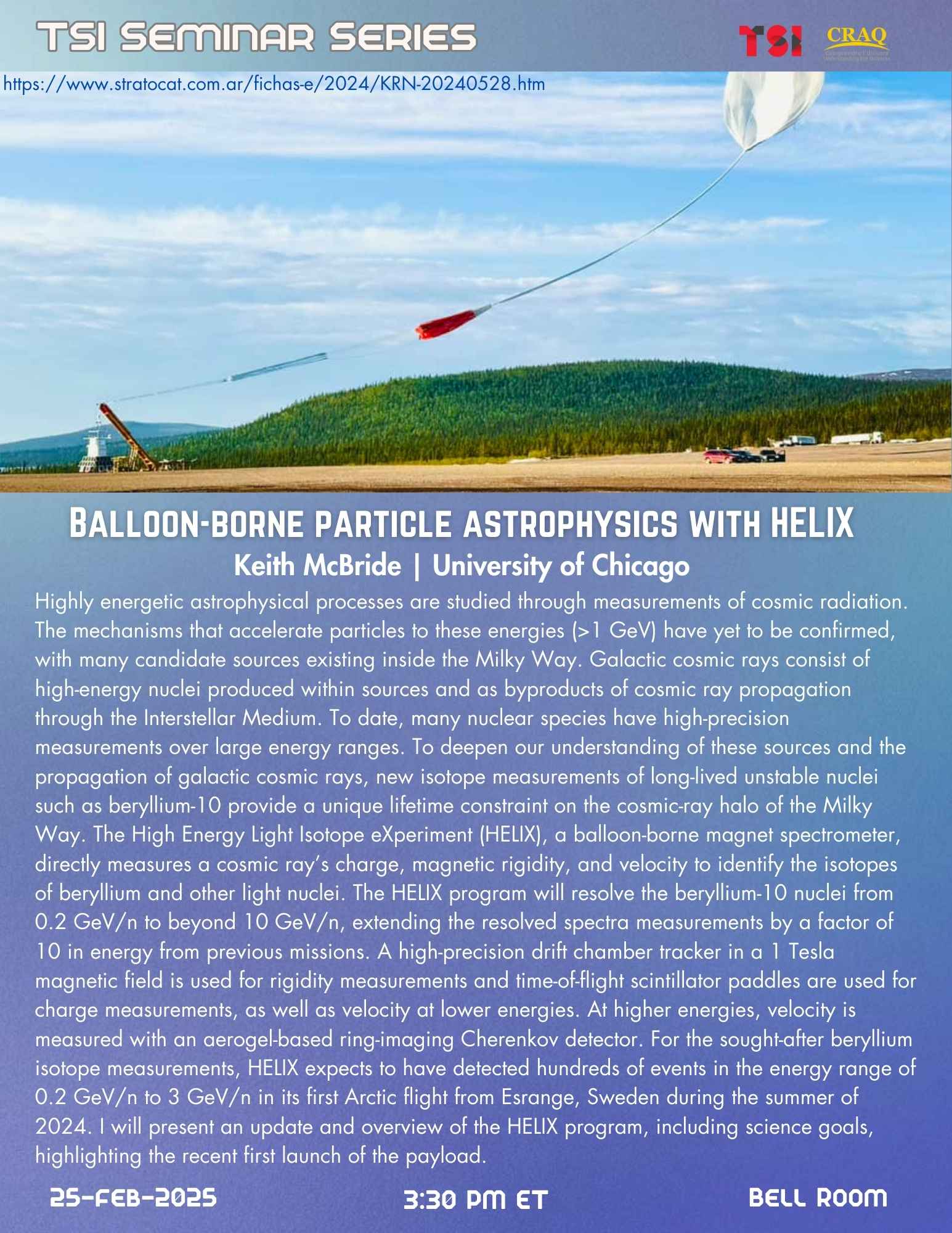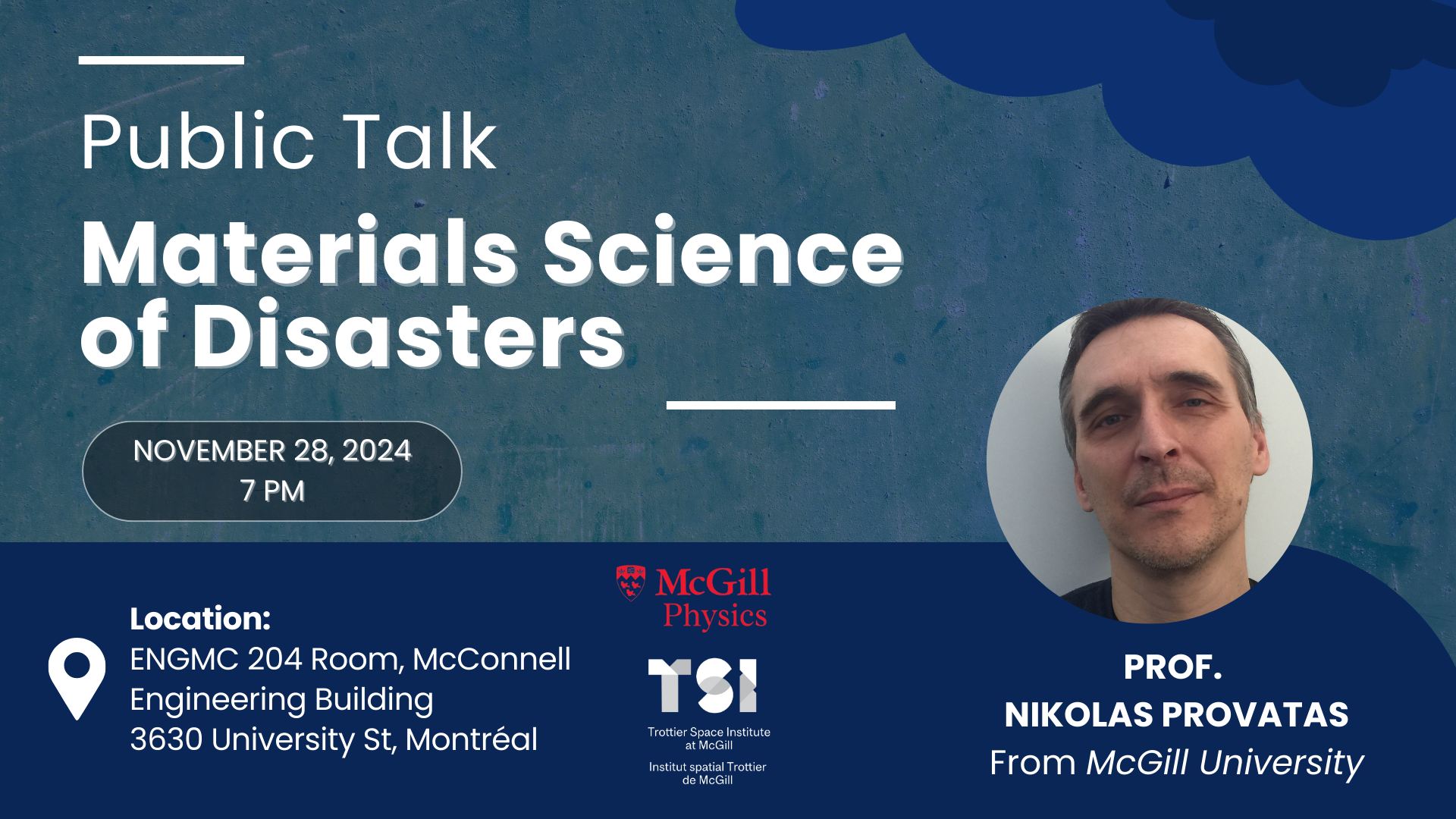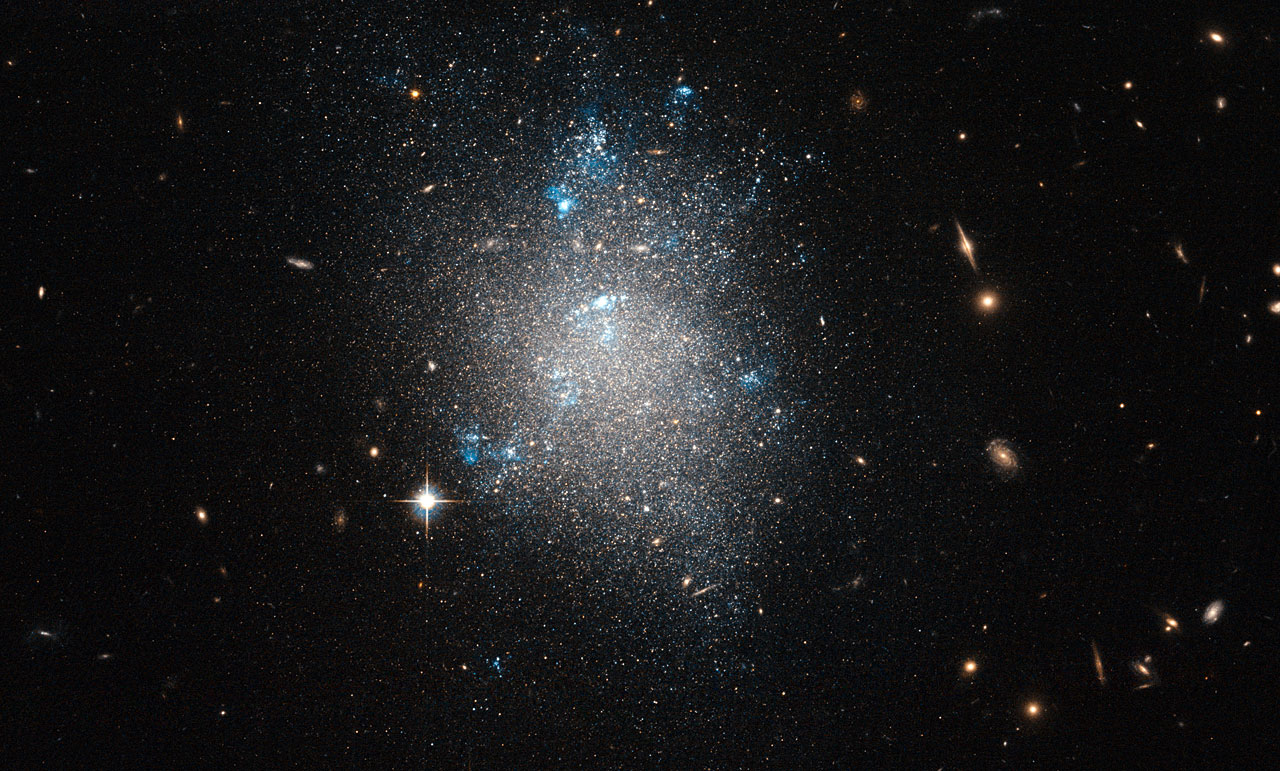Decoding Exoplanet Atmospheres: The Revolutionary Role of JWST
Luis Welbanks
(Arizona State University)
Dec 12, 2023 3:30 PM
Location: Bell Room
TSI Seminar
Title: Decoding Exoplanet Atmospheres: The Revolutionary Role of JWST
Abstract:
The 2020s and beyond will be the era of spectroscopy of exoplanet atmospheres. In just 2 years, our field has made dramatic advancements, moving from having very limited wavelength coverage and precision data from the Hubble Space Telescope (HST), to having high-precision spectroscopy over a wide wavelength range (~0.4 to 20μm) with the James Webb Space Telescope (JWST). These exquisite observations come with the opportunity to perform detailed reconnaissance of exoplanet atmospheres, explore their chemical and physical properties, and perform population-level studies to test our hypotheses for planet formation and evolution. In this talk, I will share with you the advancements ushered by the era of JWST, allowing us to answer not only what exoplanet atmospheres are made of, but also which data drive our inferences and how reliable these inferences are. I will present the results from several programs with JWST. In these programs, we detect and constrain several chemical species that were previously elusive in exoplanetary atmospheres, including methane (CH4), ammonia (NH3), sulfur dioxide (SO2), carbon monoxide (CO), and carbon dioxide (CO2), alongside several precise water (H2O) measurements. The atmospheric retrievals performed on these data provide insights into the dynamics, chemistry, and climatic conditions of these distant worlds, as well as their metallicities. They also provide the relative elemental ratios (C/O, N/O, N/S) necessary to better understand the formation and evolution pathways of planetary systems. I will present our progress in robustly and accurately processing JWST Time-Series Observations data. Additionally, I aill discuss modeling advancements and our methods for reliably inferring the complete chemical inventory of our diverse exoplanet sample. Our findings underscore the transformative power of JWST and pave the way for future, in-depth atmospheric investigations of a larger exoplanet population.




































